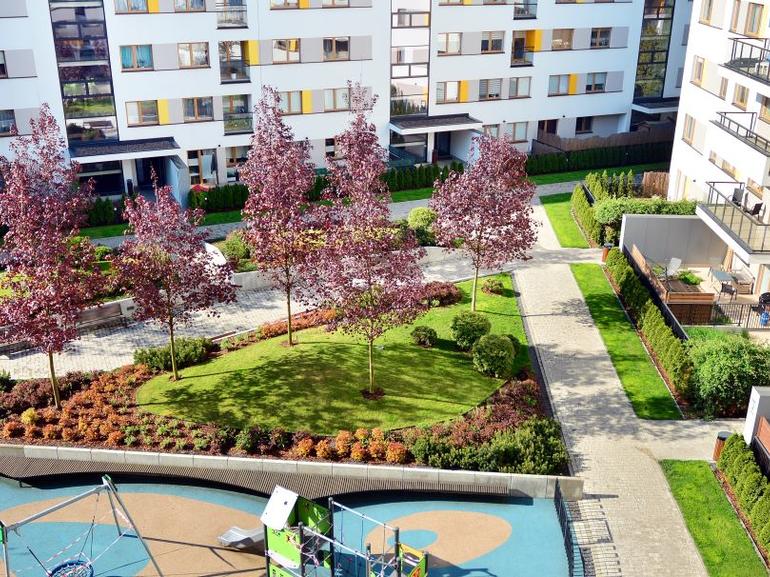Understanding the Lease-Up Loan Landscape: How Different Lenders Structure Pre-Stabilization Financing for Multifamily Assets

As interest rates remain high for most debt products, multifamily developers are seeking ways to exit their high-cost construction loans prior to the property being fully leased. However, qualifying for a new permanent loan can be difficult when an asset isn't stabilized or they are not achieving their proforma rents, leaving developers stuck between a rock and a hard place. This situation is becoming increasingly common.
Construction take-out loans that occur prior to stabilization can lower developers’ borrowing costs sooner than if they waited for the property to be stabilized. This type of financing is called a "pre-stab" or "lease-up" loan and is a good choice for new, recently constructed or newly renovated multifamily apartments. Lease-up loans can also eliminate the need for a bridge loan if the developer has an approaching loan maturity prior to stabilization. However, some lenders require a property to be 50% leased or occupied, at a minimum, before financing new loans earlier in the lease-up period. Outlined below is how different lenders determine the timing, sizing and pricing of these products.
Agency Loans
Agency lease-up loans can be quoted once the property NOI can achieve a 1.0x interest-only DSCR and 60% occupancy, and you can close with occupancy at 75% to 80%. Loan sizing is 1.25x on a 30-year amortization on the stabilized NOI, and the interest rates are typically seven to 15 basis points above the permanent rate. Term lengths are either five, seven or ten years. Agency loans allow you to lock in the rate prior to closing. However, they require a credit enhancement. Lenders might waive this requirement, but getting waivers for the credit enhancement can be challenging if the loan is full-term interest-only.
Debt Funds
With debt fund lease-up loans, you must apply for and obtain a certificate of occupancy (CofO) before a lender is able to provide a quote. This lender segment's typical minimum debt service coverage ratio (DSCR) is 1.25x on a 30-year amortization with a 6.5% rate based on the stabilized NOI, which is typically two to three years after lease-up. They size the take-out loan this way because they are assuming their lease-up loan will be refinanced by Freddie Mac or Fannie Mae. Interest rates start at 250 basis points above the benchmark rate, which is most commonly the Term Secured Overnight Financing Rate (SOFR). The typical initial term is three years with two, one-year extensions. The benefits of debt funds are more loan proceeds and being able to execute early in the lease-up process.
Life Companies
With life insurance companies, the lender will require a CofO for a quote and potentially a master lease at closing to cover the NOI shortfall. Loan sizing is 1.25x on a 30-year amortization, and interest rates start at 165 basis points above the U.S. Treasury rate. You have the ability to lock in a rate 90 days before you anticipate 1.0x cover, and these loans are typically five, seven or ten years long. However, you can go shorter or longer if you’d like.
Banks
When working with a bank, they will require a CofO and will consider quoting the lease-up loan when a development has near 50% occupancy. They will close the loan at 75% to 80% occupancy, assuming there is momentum. Loan sizing is 1.25x on a 30-year amortization utilizing a minimum underwriting rate of 200 basis points above the corresponding U.S. Treasury rate. The actual interest rate of the lease-up loan will likely be SOFR plus 300 basis points or a fixed rate of 200 to 225 above SOFR. Bank lease-up loans are usually "float then fixed," meaning loans start with a variable interest rate and then transition to a fixed rate. Deposits required by banks can range from 5% to 20% depending on the bank.
CMBS
CMBS lenders don't require a specific occupancy rate for a quote but can only close when the occupancy is above 90%. CMBS loans will require a 1.2x interest-only cover, and the interest will be at a minimum 225 basis points above the corresponding treasury rate. You can lock in this rate at closing. Similar to Agency loans, CMBS term lengths are five, seven or ten years.
Executing Lease-Up Loan Strategies Effectively
As outlined in this report, the timing, sizing and pricing of lease-up loans vary by lender. However, these products might be attractive for multifamily developers looking to exit high-cost construction loans early. Consider pre-stab terms, sizing metrics, pricing and other factors when deciding which lender type is right for you.
By understanding how lease-up loans work, you can execute leasing initiatives that help you achieve your investment goals. That might involve filling vacancies, attracting tenants by offering concessions such as free rent and optimizing your rental rates. Lease-up loans generally come with a pricing premium because the lender is taking on additional risk by closing the loan prior to stabilization. It is important for developers to do the math and determine if taking out higher-cost debt early – albeit at a slight premium to current market rates – with a lease-up loan makes financial sense.
Insights
Research to help you make knowledgeable investment decisions



